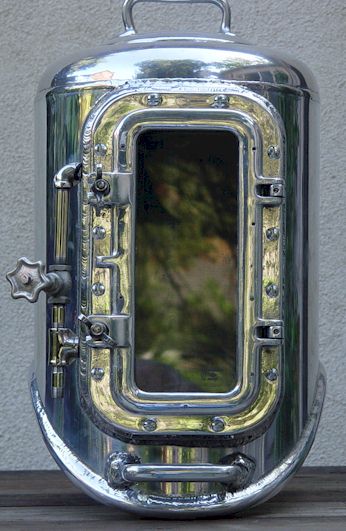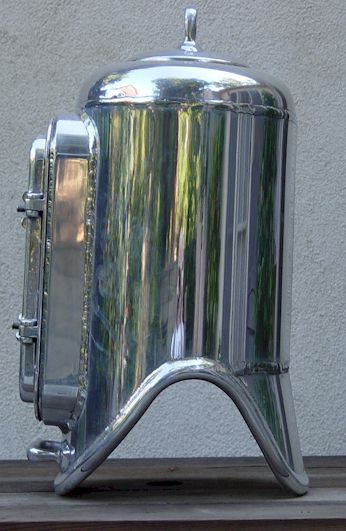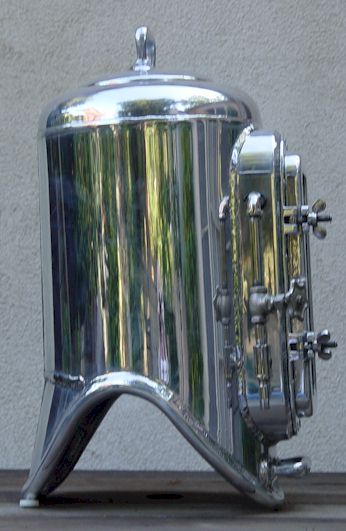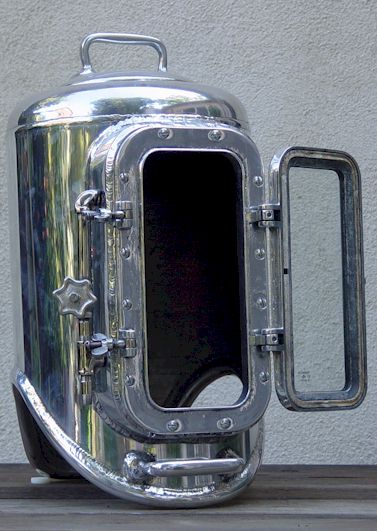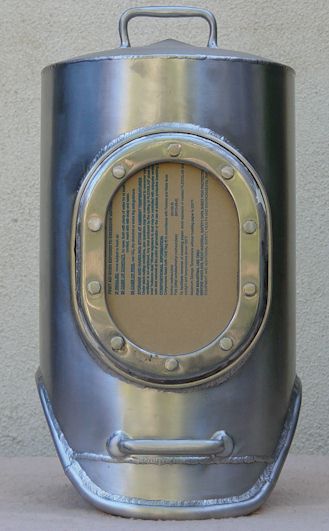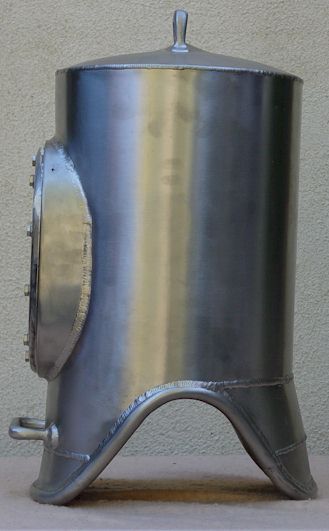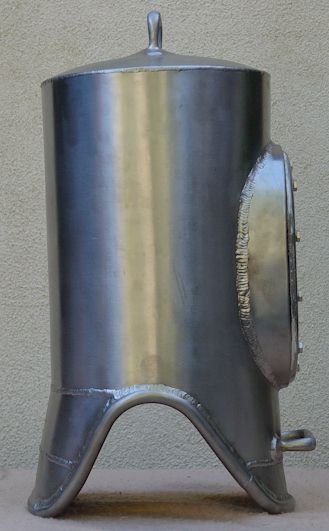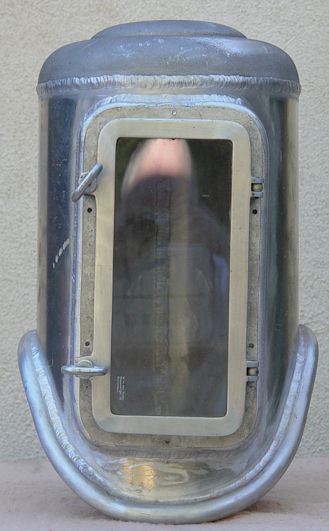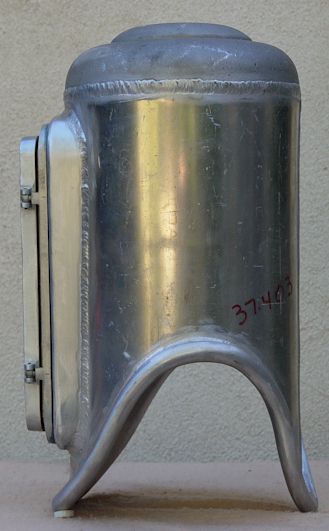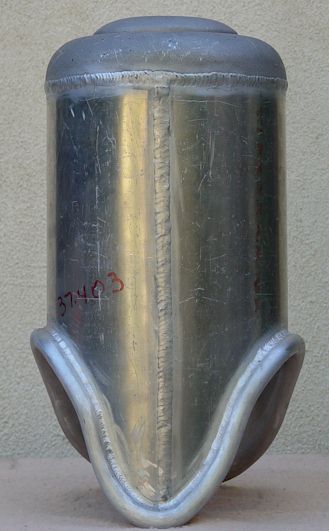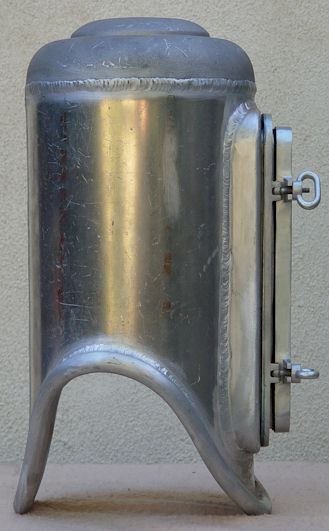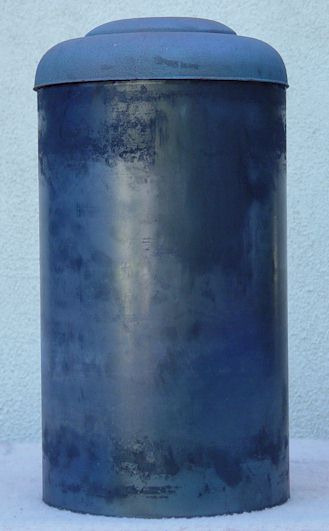All material in
this article was contributed
and is copyrighted © by our Yankee friend
Ed Fogderud
Introduction
Ed was born, raised,
and still resides in Southern California. He spent three years in service to his
country in the U.S. Army, after which he returned to school, on the GI bill, and
graduated with a Bachelor of Science degree from the University of San
Francisco. Ed's lifelong fascination with Underwater Diving Helmets started
early, when at the age of ten he was unsuccessful in convincing his father to
buy him a Mark 5 that he'd found in a war surplus store. His helmet collection
is the end result of his passion. Ed says, "I've never met a diving helmet I
didn't like". Ed not only collects helmets, He also designs and builds his own
helmets, some of which are as follows: |
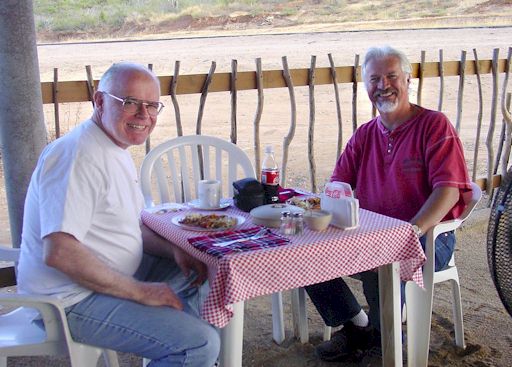
Ed (left) and his buddy Jack
Janzen on a trip to Mexico
|
The first helmet
Ed tells us:
"I've been
considering designing and building my own helmets for years now, and am
happy with this, the results of my first attempt. I've had a mold made for
the domes, and have cast up several in aluminum, red & yellow brass, and
iron. My first hat, in aluminum, is pictured here. It's made of ľ"
aluminum plate with a cast top and slotted aluminum pipe fitted up around the
bottom edge. I rolled the cylinder, and the faceplate is an old salvaged
porthole. The same foundry, that I used for the domes, cast the top and
front handles. The seams are welded, inside and out, and an old air control
valve was added to the right side of the faceplate's frame. The position of
the inlet directs the airflow to the inside of the faceplate, which prevents it
from fogging up. When I did the cut out for the shoulders, I wanted an exact
fit. I didn't allow space for the slotted pipe around the bottom edge of
the hat. After the piping was welded up, and when I tried the hat on, it had a
1" gap between the top of my shoulders and the helmet, Duh... The only
thing I could do, at that point, was to notch out the back on the hat, pull the
bottom out a little and re-weld it. I'll add weights, and maybe
side-ports, in the future, but haven't made up my mind on the designs yet."
The second helmet
Ed continues:
"My 2nd helmet is
pictured here, and is made out of heavy gage stainless steel. As you can see,
it' s a work in progress and not yet completed. I still have to cast up and
finish the SS handles and side-ports, and decide where to position the air
inlet. The cylinder, dome and face port frame are of the same heavy gage SS. It
was just too expensive to cast the dome out of SS, so I decided to make it out
of the same plate as the cylinder. The face port is, again, an old salvaged SS
porthole."
The third helmet
"My 3rd helmet is
another aluminum one, made of ľ inch plate, with a cast dome. The shoulder
cutouts are a little wider here and as such, I didn' t have to stretch out the
back of the hat, like I did on my first one. I bent and welded solid aluminum
rod around the outside edge of the bottom of the hat, as this was much easier
than using hollow pipe, or tube."
The fourth helmet
A true inventor
never stops! He continues:
"My 4th helmet is
just beginning here. I'm using 3/8-inch iron boilerplate with a cast-iron dome.
I haven't had much of a chance, to think about the rest of the hats design, but
I do know already, that I won't need to add much extra weight. I'll l send you
more on the progress of these, and the future red and yellow brass hats, as they
develop. Keep up the good work. Your Yankee friend, Ed."
The fifth helmet
Edís fifth helmet
pictured below is constructed from an early 1930s heavy duty industrial hot
water tank. The copper sheet is in fact 1/16 inch thick (1.5mm).
The top of the helmet was the riveted section of the tank. The unusual crown is
made from yellow brass and cast from a wooden pattern turned on a lathe.
The crown acts as a dome protector being much stronger and harder than the
copper plate below.
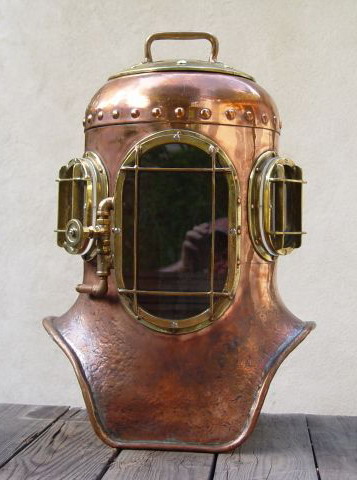
Other parts such as
the handle, front and side ports and were cast from steel patterns turned up on
a lathe. On careful examination of the rear side views we see the side ports are
made so they angle out more at the back by 9/16 of an inch. This is to improve
the diverís vision. The lenses are made from ľ inch Lexan polycarbonate sheet.
All the castings are riveted and soldered on to the main structure of the
helmet. The air control valve, located in a convenient position on the diverís
right hand side can be operated by the diverís left hand. The valve is an
antique1/4 inch high pressure steam valve. There were many hours spent hammering
out and forming the tank, also bending , folding splitting and soldering Ĺ inch
copper tubing around the bottom edge. The final job for Ed is to cast the front
and back weights from wooden patterns which will be heart shaped and made from
lead to counteract the positive buoyancy.
|
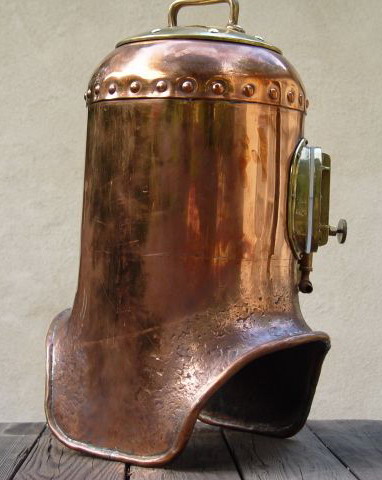 |
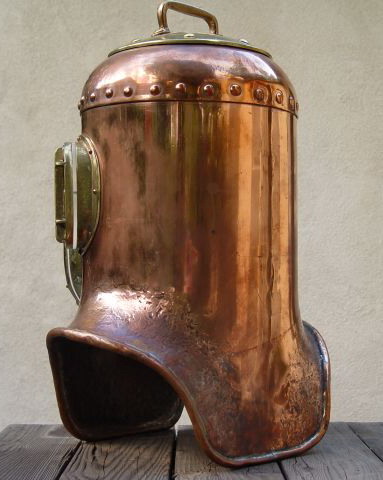 |
This helmet
represents a piece of craftsmanship and design akin to the early designs of the
helmet makers in the 1920s and 1930s.
Many thanks to
Ed Fogderud, without his fantastic help this article would not have been
possible
- Last edited 27th November 2008

